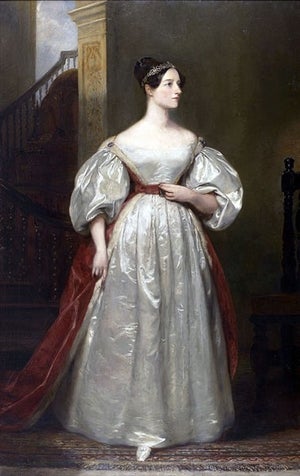
Painting of Ada Lovelace by Margaret Sarah Carpenter, 1836
Did you know that a 19th century woman named Ada Lovelace could be considered the first computer programmer?
Ada Lovelace was the only legitimate child of the bad boy Romantic-era poet Lord Byron. Her mother left Byron right after their daughter was born, and decided to raise her to love math and science and hate poetry. When Lovelace was eighteen, her tutor introduced her to mathematician Charles Babbage. The two became close friends, and spent hours talking and working on math problems together: Babbage called Lovelace “the Enchantress of Number.”
Babbage designed two classes of computing machine, “The Difference Engine and the Analytical Engine,” that used metal wheels and gears to perform addition and subtraction of whole numbers quickly and accurately. While he never had the money to fully build his machines, the idea fascinated mathematicians around the world.
From 1842 to 1843, Lovelace translated an article about the Analytical Engine by an Italian mathematician, Luigi Menabrea. With the translation, she included her own notes and explanations, which were three times the length of the article! These notes included instructions on how one would use the machine to calculate Bernoulli numbers: the first published algorithm ever created specifically for a computer.